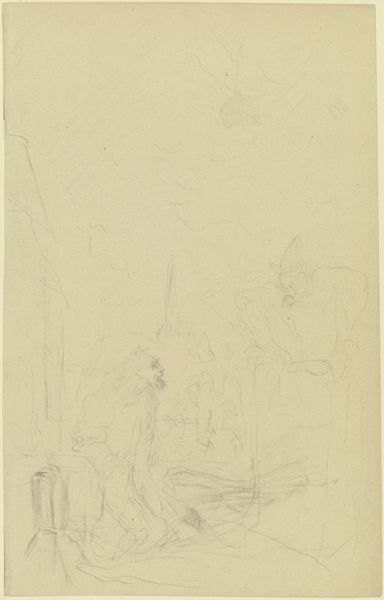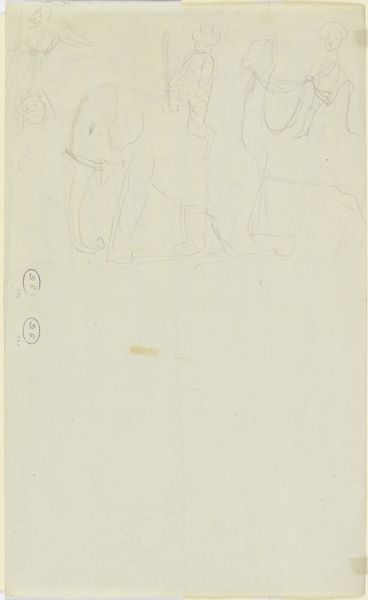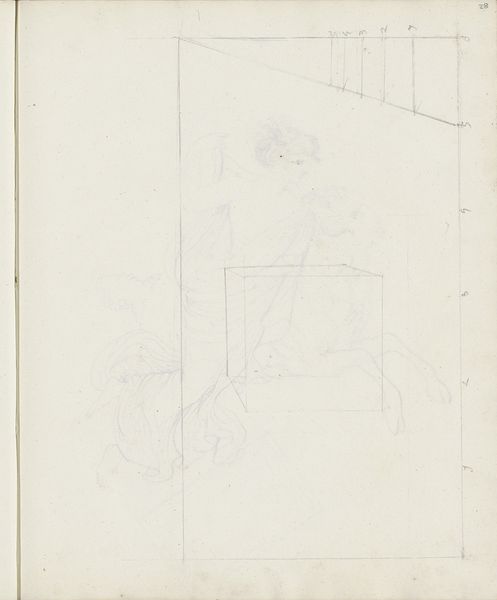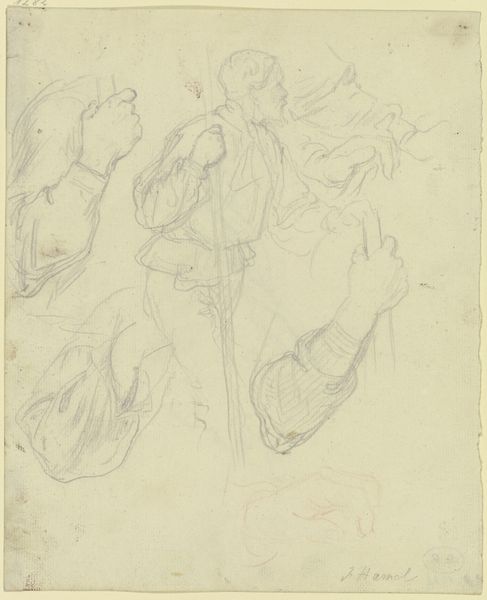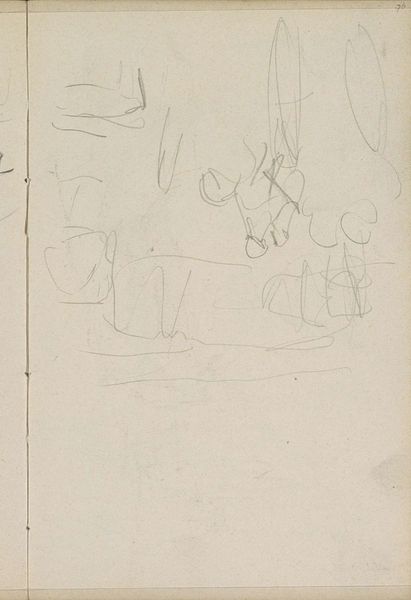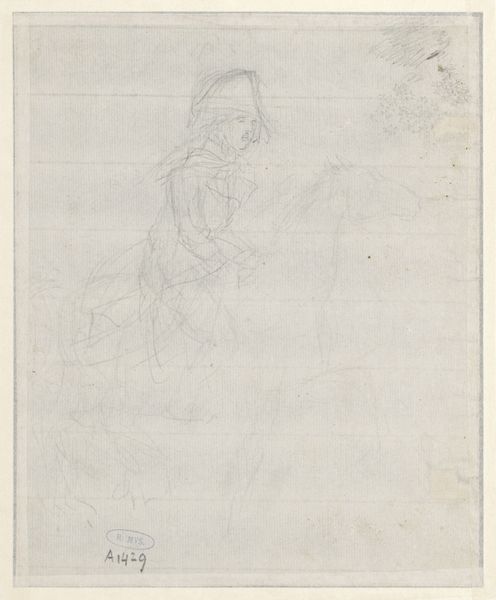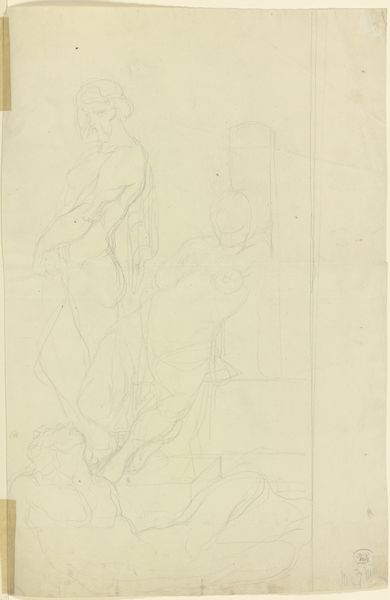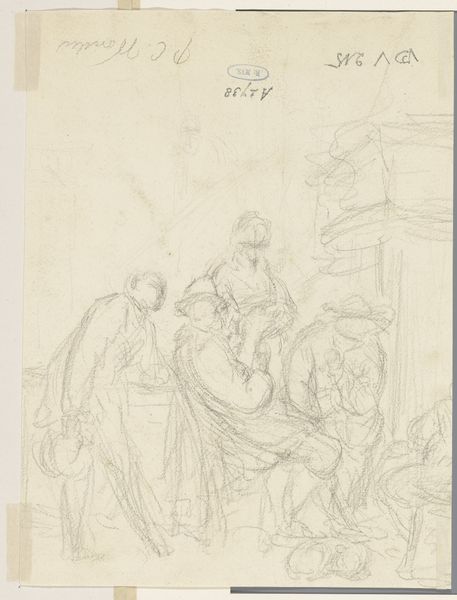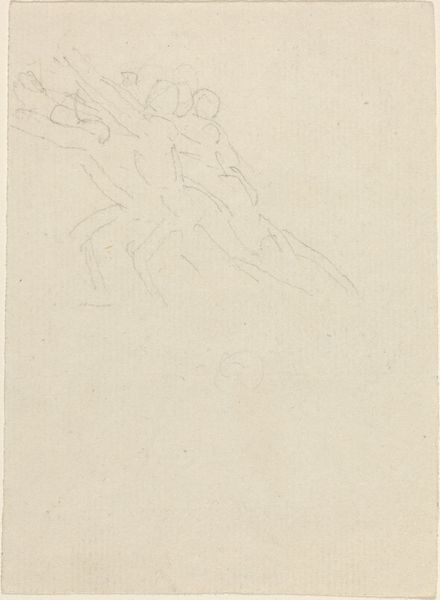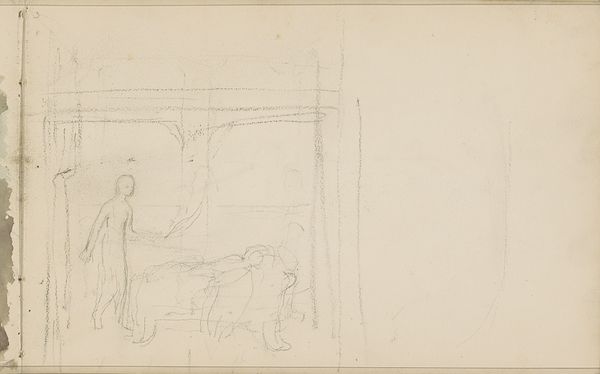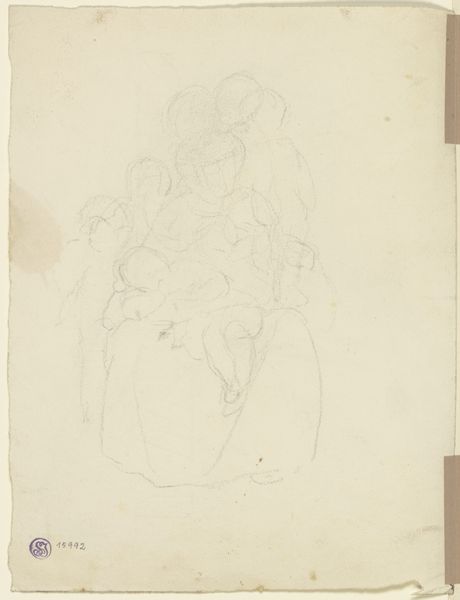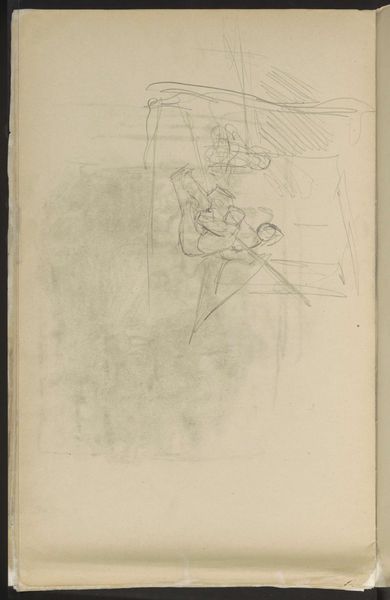
drawing, paper, pencil
#
portrait
#
drawing
#
16_19th-century
#
impressionism
#
pencil sketch
#
landscape
#
paper
#
personal sketchbook
#
sketch
#
pencil
#
sketchbook drawing
#
realism
Copyright: Public Domain
Curator: Otto Scholderer's sketch, "Frau, einen Esel am Strick führend", now in the Städel Museum, offers us an intimate glimpse into his artistic process. Editor: My first thought? It's understated, almost ghostly. The pencil work is so light; it feels like a fleeting moment captured on paper. Curator: Indeed. You can see how the artist is exploring form and composition here. The quick, gestural lines are indicative of a preliminary study, likely for a larger, more realized piece. The focus appears to be the relationship between labor, class, and perhaps even the feminine within rural social structures. Editor: The donkey itself carries so much symbolism. It is often associated with patience, humility, but also stubbornness and hardship. Pairing it with the woman suggests a shared burden, perhaps alluding to their social roles and daily struggles in nineteenth-century society. Curator: Precisely! Scholderer uses humble materials – pencil and paper – to elevate everyday subjects, reflecting a shift toward Realism, where ordinary life takes center stage. We're seeing the democratisation of art through its very making, moving away from idealized grand narratives towards lived experience. Editor: The sketch format enhances this intimacy, doesn't it? These fleeting glimpses were highly sought-after for both what the subject suggested and how their rendering humanised otherwise divine qualities, revealing vulnerability within the quickly drawn sketch. Curator: And let’s consider paper as material itself: a mass-produced commodity, becoming more accessible to artists during this time. Pencil similarly shifts from tool to be used for only refined purposes. Here, sketching opens itself as experimentation for working artists of the time. Editor: It truly makes you consider this almost subconscious link between woman and beast and if we are interpreting both correctly as they exist in an impressionist cultural memory. Thank you for highlighting some production features. Curator: Thank you; considering these processes, hopefully it gave us a slightly more textured view.
Comments
No comments
Be the first to comment and join the conversation on the ultimate creative platform.
